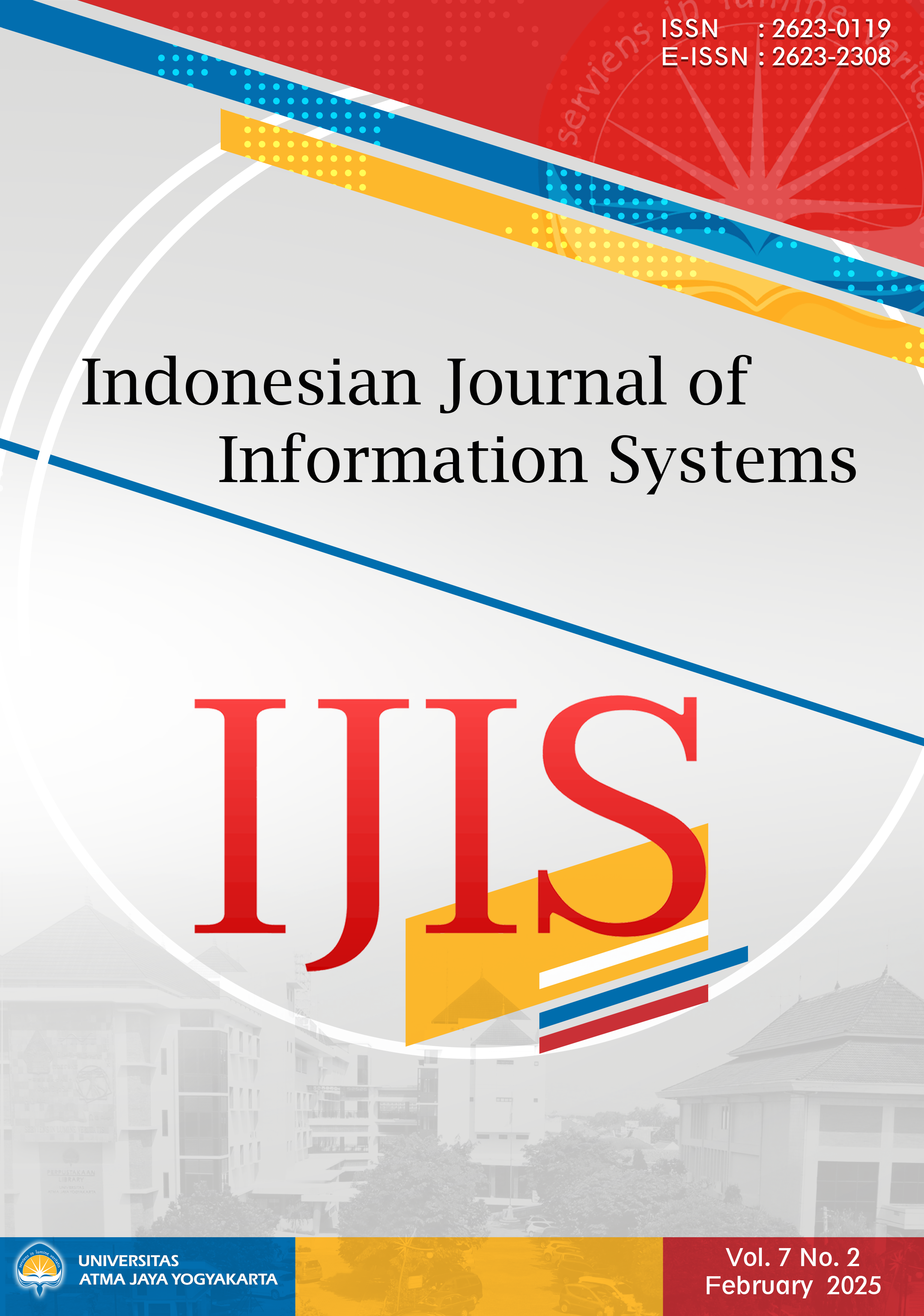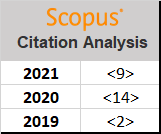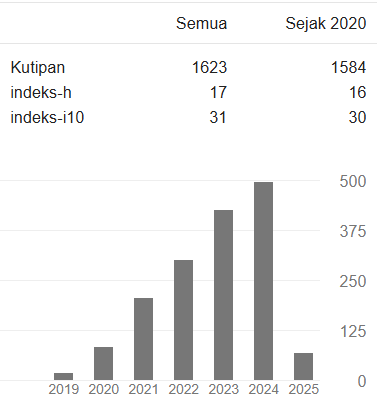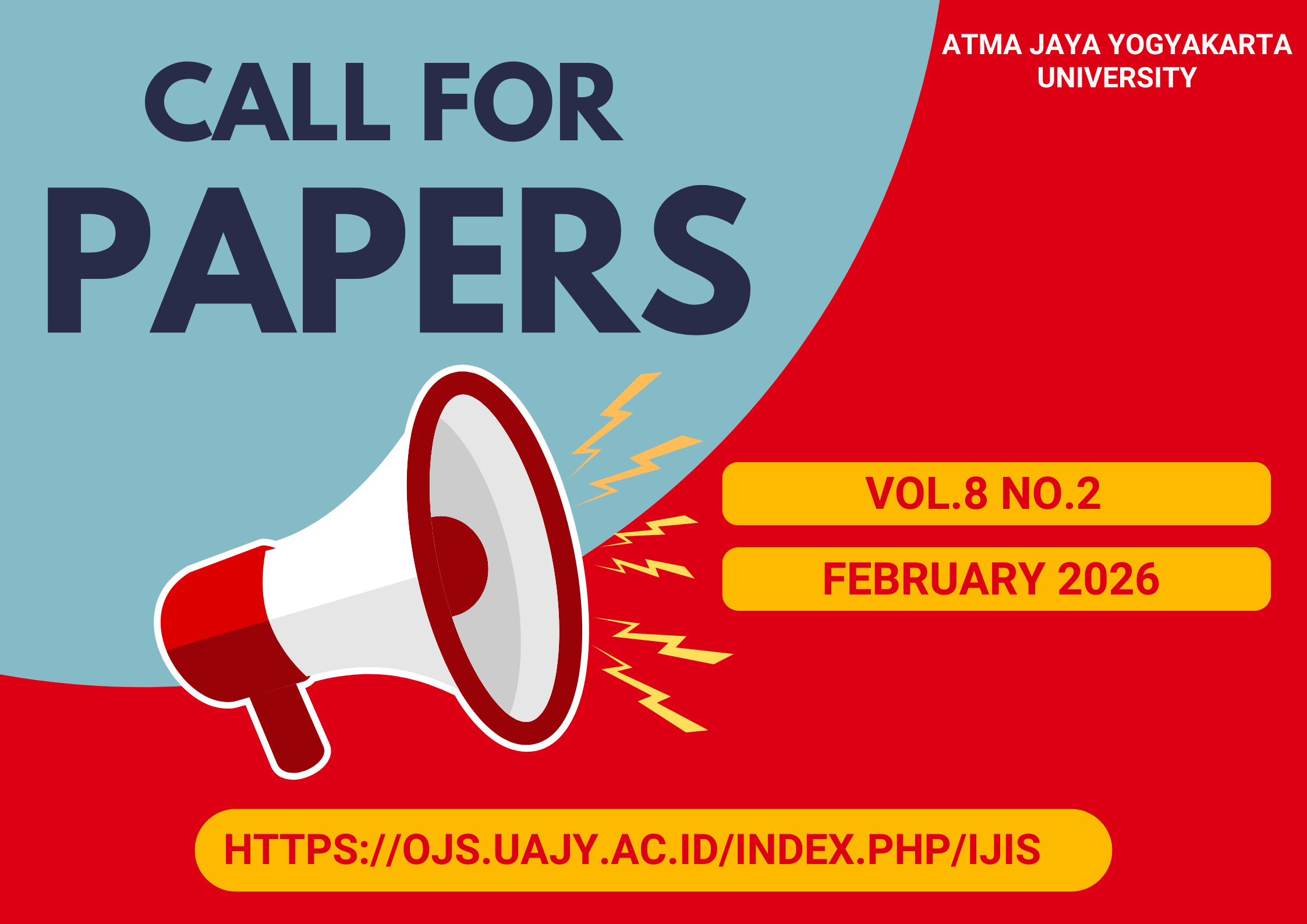Comparison of Automatic and Manual Regression Testing on Mobile Application Health Technology with Black Box Testing Method
DOI:
https://doi.org/10.24002/ijis.v7i2.6850Abstract
The opening of opportunities for health tech services in Indonesia can lead to increased competition. This makes the company continue to innovate by updating or adding functionality to software systems that have been developed. Because of this, software testing with a shorter time is required so that test performance remains maximum. The object of this research is the Teman diabetes application developed by PT. Global Urban Essentials. In this research, the software testing conducted includes automatic regression testing and manual regression testing. The two testing approaches will be compared to evaluate their effectiveness in detecting bugs and their efficiency in terms of time usage. The method used in automatic regression testing is the black box testing method, implemented within the Software Testing Life Cycle (STLC) that is include requirement analysis, test planning, test case development, test environment setup, and test execution. The primary focus of this research is to asses the effectiveness of automatic and manual regression testing in identifying bugs/errors and measuring efficiency in time utilization, based on the analysis of test reports generated from both methods. In this study, it was found that testing carried out by automation is 9.77% faster. In addition, a bug was found in the shopping feature as a result of the new features being released. This bug was discovered after running automated regression testing and was not found in manual regression testing because the bug testing was missed.
References
[1] Yenny Yusra, “Layanan Healthtech di Asia Berkembang Pesat, di Indonesia Belum Signifikan,” Dailysocial.id. [Online]. Available: https://dailysocial.id/post/healthtech-di-asia
[2] Andriansyah Agustian, “Menerka Potensi Perkembangan Startup di Bidang Kesehatan,” Dailysocial.id. [Online]. Available: https://dailysocial.id/post/menerka-potensi-perkembangan-startup-di-bidang-kesehatan
[3] R. A. Wijaya, N. Ilhama, and B. Paramastri, “Pentingnya Pengelolaan Inovasi Dalam Era Persaingan,” vol. 5, no. 2, pp. 217–227, 2019.
[4] Mohamad Nur Asikin, “ACIS 2018: Pentingnya Inovasi Hadapi Ketatnya Persaingan Merebut Pasar,” JawaPos.com. [Online]. Available: https://www.jawapos.com/ekonomi/bisnis/16/11/2018/acis-2018-pentingnya-inovasi-hadapi-ketatnya-persaingan-merebut-pasar/
[5] S. Torniainen, “Improving Effectiveness of Regression Testing of Telecommunications System Software,” 2008.
[6] A. Ngah, M. Munro, and M. Abdallah, “An overview of regression testing,” Journal of Telecommunication, Electronic and Computer Engineering, vol. 9, no. 3-5 Special Issue, pp. 45–49, 2017, doi: 10.1145/308769.308790.
[7] A. Permana, “Gojek Rugi Puluhan Milyar Gara-gara Bug GPC,” Trentech.id. [Online]. Available: https://www.trentech.id/gojek-rugi-puluhan-milyar-gara-gara-bug-gpc/
[8] R. Cohane, “Financial Cost Of Software Bug,” Medium.com. [Online]. Available: https://medium.com/@ryancohane/financial-cost-of-software-bugs-51b4d193f107
[9] K. Akromunnisa, “Manual and Automated Testing,” Medium.com. [Online]. Available: https://medium.com/@kitamiakr/manual-and-automated-testing-908d184bf0be
[10] K. Suryaprabha and P. Sudha, “Measuring Effectiveness of software Quality by Comparing Manual Testing and Selenium,” no. February, 2019.
[11] I. Dobles, A. Martinez, and C. Quesada-Lopez, “Comparing the effort and effectiveness of automated and manual tests: An industrial case study,” Iberian Conference on Information Systems and Technologies, CISTI, vol. 2019-June, no. June, pp. 19–22, 2019, doi: 10.23919/CISTI.2019.8760848.
[12] F. Zahro, F. Pradana, and A. Arwan, “Kakas Bantu untuk Penentuan Prioritas Test Scenario Berdasarkan UML Activity Diagram,” vol. 3, no. 6, pp. 5376–5382, 2019.
[13] G. J. Myers, T. Badgett, and C. Sandler, Eds., The Art of Software Testing. Wiley, 2012. doi: 10.1002/9781119202486.
[14] B. Beizer, Black-Box Testing: Techniques for Functional Testing of Software and Systems. Wiley, 1995.
[15] C. Kaner, J. Bach, and B. Pettichord, Lessons Learned in Software Testing: A Context-Driven Approach. Wiley, 2001.
[16] A. Sharma and S. Jain, “Efficiency Analysis of Automated Versus Manual Regression Testing in Agile Development,” Journal of Software Engineering Research and Development, vol. 7, no. 1, pp. 45–62, 2019.
[17] L. Mariani, M. Pezze, and O. Riganelli, “Automating Regression Testing for Evolving Software,” IEEE Transactions on Software Engineering, vol. 43, no. 4, pp. 299–319, 2017.
[18] A. Bertolino and A. Polini, “Software Testing Automation: Advances and Challenges,” Software Quality Journal, vol. 21, no. 4, pp. 627–648, 2013.
[19] S. W. G. AbuSalim, R. Ibrahim, and J. A. Wahab, “Comparative Analysis of Software Testing Techniques for Mobile Applications,” J Phys Conf Ser, vol. 1793, no. 1, p. 012036, Feb. 2021, doi: 10.1088/1742-6596/1793/1/012036.
[20] J. A. Whittaker, Exploratory Software Testing: Tips, Tricks, Tours, and Techniques to Guide Test Design. Addison-Wesley Professional, 2009.
[21] Krishna, “black box testing,” guru99.com. [Online]. Available: https://www.guru99.com/black-box-testing.html
[22] “Software Testing Life Cycle,” guru99.com. [Online]. Available: https://www.guru99.com/software-testing-life-cycle.html
[23] M. K. Hutauruk, “UML Diagram : Use Case Diagram,” Binus University. [Online]. Available: https://socs.binus.ac.id/2019/11/26/uml-diagram-use-case-diagram/
[24] GueSehat, “Goapotik,” goapotik.com. [Online]. Available: https://www.goapotik.com/pages/tentang-kami
[25] Yoel, “Cara Menghitung Persentase Kenaikan,” Statmat. [Online]. Available: https://statmat.id/cara-menghitung-persentase-kenaikan
Downloads
Published
How to Cite
Issue
Section
License

This work is licensed under a Creative Commons Attribution-ShareAlike 4.0 International License.
Indonesian Journal of Information Systems as journal publisher holds copyright of papers published in this journal. Authors transfer the copyright of their journal by filling Copyright Transfer Form and send it to Indonesian Journal of Information Systems.

Indonesian Journal of Information Systems is licensed under a Creative Commons Attribution-NonCommercial 4.0 International License.

















